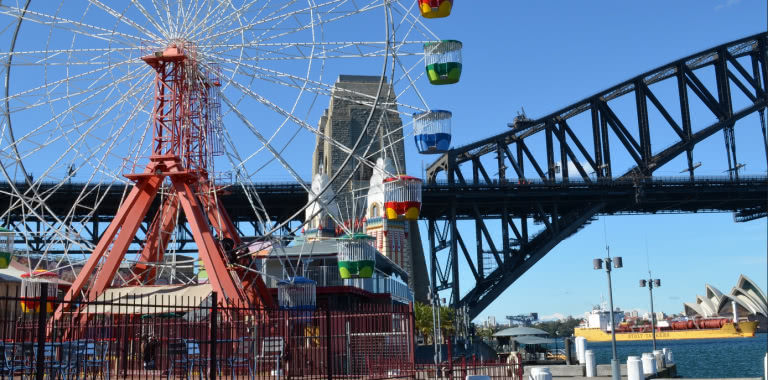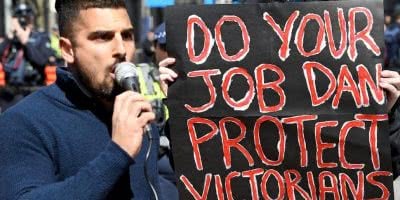Last week, the Sydney Opera House was officially fined $15,000 for breaching noise restrictions during a 2015 Florence + The Machine show.
Four Florence + The Machine gigs were held in the Opera House forecourt in November 2015, a mere week after widespread complaints by punters that volume levels were too quiet during a Tame Impala show at the same venue.
Nearby residents – who couldn’t have possibly suspected that loud music would ever emanate from one of the world’s leading concert venues – complained loudly about the volume levels during the first of Florence’s concerts; a breach was dutifully recorded by the NSW Planning and Environment during the third. It took 15 months to issue the fine – the largest it is authorised to issue for noise breaches.
An Opera House spokesperson was muted in response. “In any concert levels are adjusted throughout in an attempt to comply with sound limits while delivering the best possible audience experience. In this instance, the right balance was not achieved. The sound conditions set in 2004 under the original forecourt DA were very difficult to monitor and manage.”
What they didn’t point out was that, just across the harbour, Luna Park is home to constant screaming, cranking of machinery, and blasts of festive music. It also hosts rock gigs from some of the world’s biggest acts in its Big Top venue. Special legislation covers the park, however, to prevent neighbours from sounding the alarm.
Noise complaints actually hastened Luna Park’s closure in 1996, after restrictions were placed on the Big Dipper, the park’s main attraction. The park reopened in 2004, and a new set of protections were put in place to protect this important Sydney icon.
So, why doesn’t the Opera House, which has a fairly major clue in its name regarding its function, enjoy similar protections?
Live Music Office Director John Wardle feels an overhaul of the system is necessary.
“If you look just over the harbour, Luna Park has its own special regulation in the environmental protection laws that allow for increased sound to come from what is, like the Opera House, a cultural icon and fundamental to the historic identity of the city,” he tells the BRAG.
“If the NSW Government is looking at taking this issue seriously, and it should, there are other alternate approaches that could also be applied, such as the environmental authorisations available to event operators in the ACT.
“These approvals are available on a case-by-case basis for event promoters where event sound levels can be allowed higher than the existing baseline for special occasions. These aren’t everyday occurrences, and like other even more noisy events – such as fireworks and motor races – add some life and fun to the public domain as well as attract visitation and boost the economy.”
Of course, the economy could be a sound reason to implement sound changes, but it’s the more monied residents who are making the real noise against such legislation. The majority of complaints about the Opera House are made by those who reside in the nearby Bennelong Apartments – a cartel of those with some of the most powerful business interests in the country. It’s not a stretch to assume they have some real sway in governmental matters.
One can further assume that, had those whining about noise been on the lower end of the socio-economic scale, these complains would have fallen on deaf ears.
The Opera House may have breached noise levels, but money can still out-yell everything else.
Show your support for live (and loud) music on Sydney Harbour by checking out the Big Top’s gig guide here, and the Sydney Opera House’s calendar here.


































